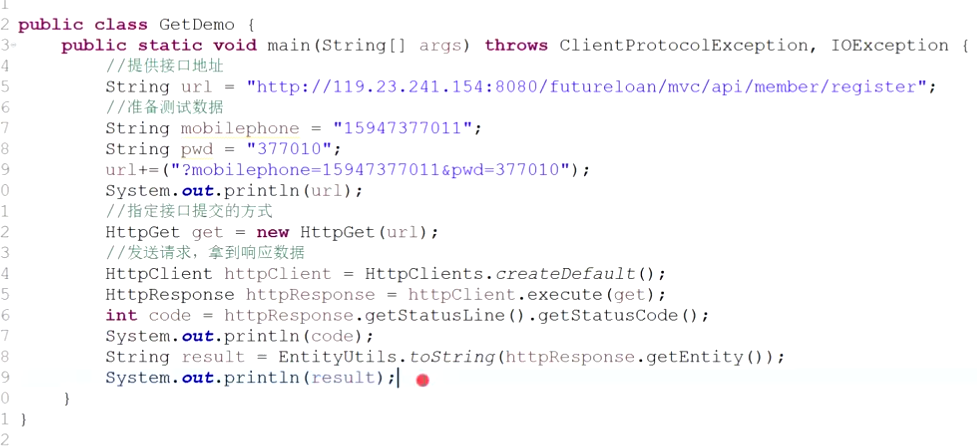package api_java01;
import org.apache.http.HttpResponse;
import org.apache.http.client.HttpClient;
import org.apache.http.client.entity.UrlEncodedFormEntity;
import org.apache.http.client.methods.HttpPost;
import org.apache.http.impl.client.HttpClients;
import org.apache.http.message.BasicNameValuePair;
import org.apache.http.util.EntityUtils;
import javax.swing.text.html.parser.Entity;
import java.io.IOException;
import java.util.ArrayList;
import java.util.List;
public class api_java001 {
public static void main(String[] args) throws IOException {
//填写接口地址
String url = "http://121.41.14.39:8082/account/sLogin";
//创建post的对象,HttpPost和HttpGet都是HttpRequest的实现类,属于子类对象
HttpPost post = new HttpPost(url);
//接口入参数据
String name = "187026297802";
String password = "123456";
//BasicNameValuePair是用来保存我们入参数据的
List<BasicNameValuePair> parameters = new ArrayList<BasicNameValuePair>();
parameters.add(new BasicNameValuePair("name", name));
parameters.add(new BasicNameValuePair("password", password));
//把请求数据放入请求对象中,通过setEntity方法,因为setEntity是个接口,所以里面传它的子类对象
//UrlEncodedFormEntity是对我们的url进行编码,以表单形式
post.setEntity(new UrlEncodedFormEntity(parameters,"utf-8"));
//发起请求,获取接口响应信息
HttpClient client = HttpClients.createDefault();
//获取响应码code
HttpResponse httpResponse = client.execute(post);
int code = httpResponse.getStatusLine().getStatusCode();
System.out.println(code);
//获取响应报文
String res = EntityUtils.toString(httpResponse.getEntity());
System.out.println(res);
}
}







